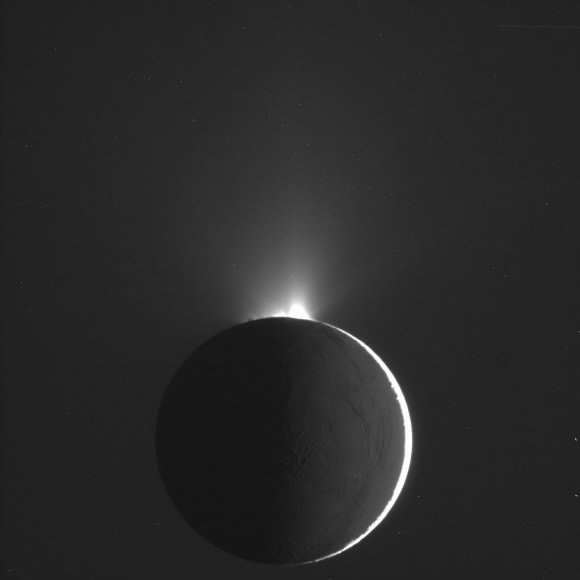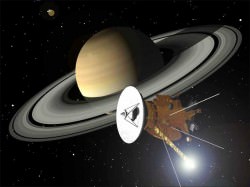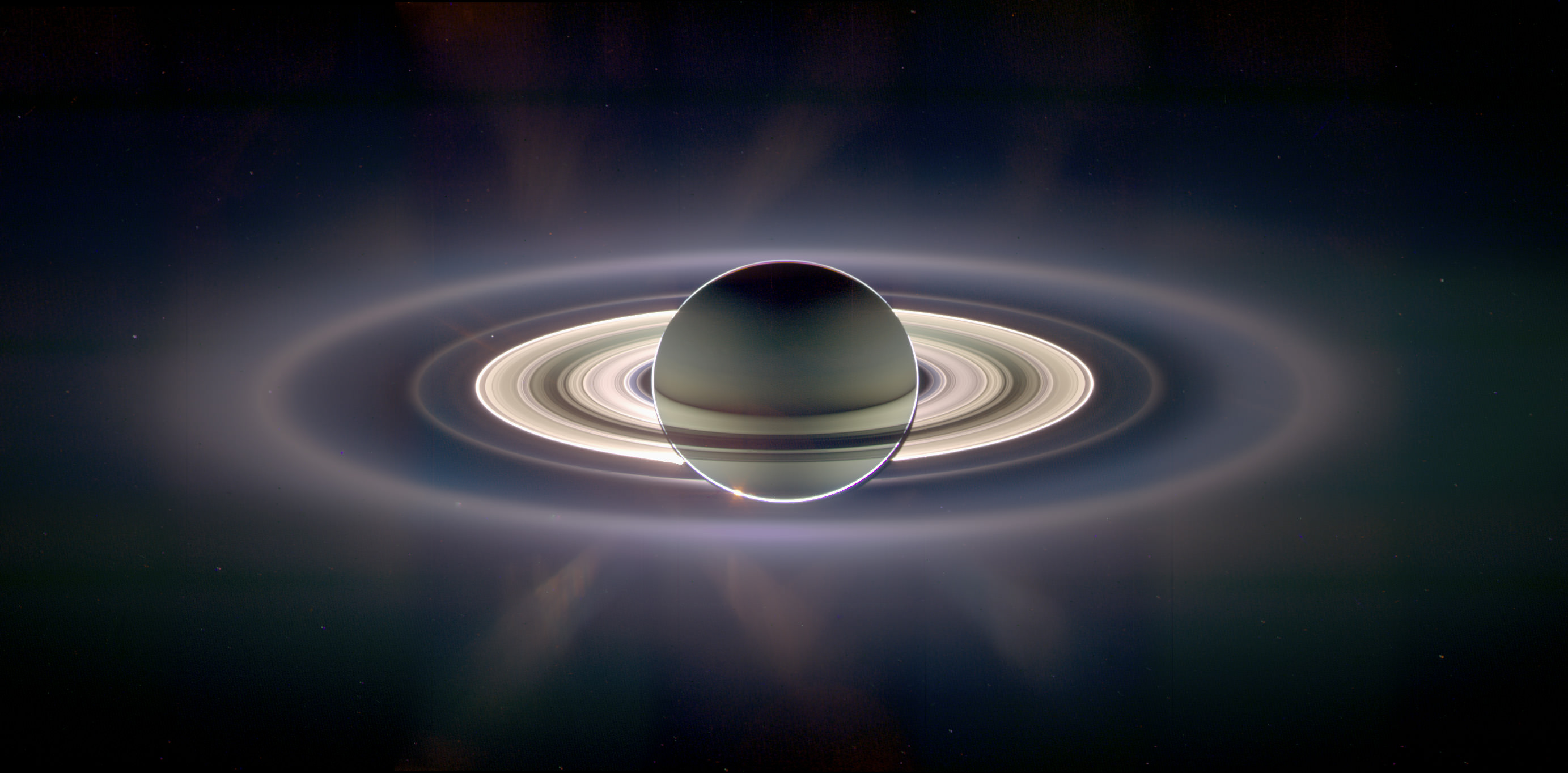[/caption]
With the new 2011 NASA budget allowing for more space science activities, the space agency has extended the Cassini mission to explore Saturn and its moons to 2017. “This is a mission that never stops providing us surprising scientific results and showing us eye popping new vistas,” said Jim Green, director of NASA’s planetary science division. “The historic traveler’s stunning discoveries and images have revolutionized our knowledge of Saturn and its moons.” This is the second mission extension for Cassini, and the new “Solstice Mission” will allow scientists to study seasonal and other long-term weather changes on the planet and its moons.
The Cassini mission will get $60 million per year to continue its study of the Saturn system.
“The extension presents a unique opportunity to follow seasonal changes of an outer planet system all the way from its winter to its summer,” said Bob Pappalardo, Cassini project scientist. “Some of Cassini’s most exciting discoveries still lie ahead.”
Cassini arrived just after Saturn’s northern winter solstice, and this extension continues until a few months past northern summer solstice in May 2017. The northern summer solstice marks the beginning of summer in the northern hemisphere and winter in the southern hemisphere.

A complete seasonal period on Saturn has never been studied at this level of detail. The Solstice mission schedule calls for an additional 155 orbits around the planet, 54 flybys of Titan and 11 flybys of the icy moon Enceladus.
The mission extension also will allow scientists to continue observations of Saturn’s rings and the magnetic bubble around the planet known as the magnetosphere. The spacecraft will make repeated dives between Saturn and its rings to obtain in depth knowledge of the gas giant. During these dives, the spacecraft will study the internal structure of Saturn, its magnetic fluctuations and ring mass.
Cassini launched in October 1997 with the European Space Agency’s Huygens probe. The spacecraft arrived at Saturn in 2004. The probe was equipped with six instruments to study Titan, Saturn’s largest moon. Cassini’s 12 instruments have returned a daily stream of data from Saturn’s system for nearly six years.

“The spacecraft is doing remarkably well, even as we endure the expected effects of age after logging 2.6 billion miles on its odometer,” said Bob Mitchell, Cassini program manager at JPL. “This extension is important because there is so much still to be learned at Saturn. The planet is full of secrets, and it doesn’t give them up easily.”
Cassini’s travel scrapbook includes more than 210,000 images; information gathered during more than 125 revolutions around Saturn; 67 flybys of Titan and eight close flybys of Enceladus. Cassini has revealed unexpected details in the planet’s signature rings, and observations of Titan have given scientists a glimpse of what Earth might have been like before life evolved.
For more info on the mission, check out the Cassini website.


Between Saturn and its rings? Between? Really? Did they decide that Cassini is now expendable?
There’s a constant rain of particles from the rings towards Saturn’s atmosphere. Will Cassini really fly through that?
Hey I’m all for it if it’ll give us the most detailed view of the rings, of course, but a particle impact at the speed Cassini achieves at its closest approach could very well destroy the spacecraft. Wow.
So if they want to risk the craft so bad, why not send it through a gap in the rings? Then we’ll have a close-up view at a few tens of kilometers! I’d like to see that!
While we might question the wisdom of US funding of the space program and the hardware that it produces, at least one thing is true. – when they make a spacecraft it lasts well past the use-by date.
Who knows. Ending the work by 2017 might be still a little too early to judge!
Happy story for once!
ioresult Says:
February 3rd, 2010 at 2:01 pm
I don’t think they’d be doing anything that poses even a minor threat to the craft considering the science goals they wish to achieve. They would have certainly considered the environmetn between Saturn and it’s rings, and determined it to be essentially safe for whatever reasons. I don’t think anyone could ever accuse NASA of acting rashly with their robotic craft…
This has been a triumph in planetary science, and the craft keeps on going. It is in a relatively benign environment, compared to the rough and grit the Mars rovers have to deal with, and the craft could function for another decade. It would be nice to have a similar craft, a replacement for Galileo, around Jupiter. The Jovian environment is rougher than Saturn’s, but this has its secrets that need looking at. A landing craft on Europa would be interesting.
LC
Read the item on the Planetary Society’s blog.
The descent into the rings is in the final score or so of orbits before the plummet into the atmosphere of Saturn.
Yes, NASA will deliberately destroy the craft to avoid any contamination of the moons.
Secondly, Cassini now has 20% of the fuel left it started out with. And yet they can run her for seven years on that. You really can’t expect any extensions beyond that. They need to be able to control the ship in order to do proper science.
The orbits under the rings will furthermore let them determine the mass of the planet alone, thus allowing them to finally get a good handle on the mass of the rings. I believe the current estimates vary within an order of magnitude!